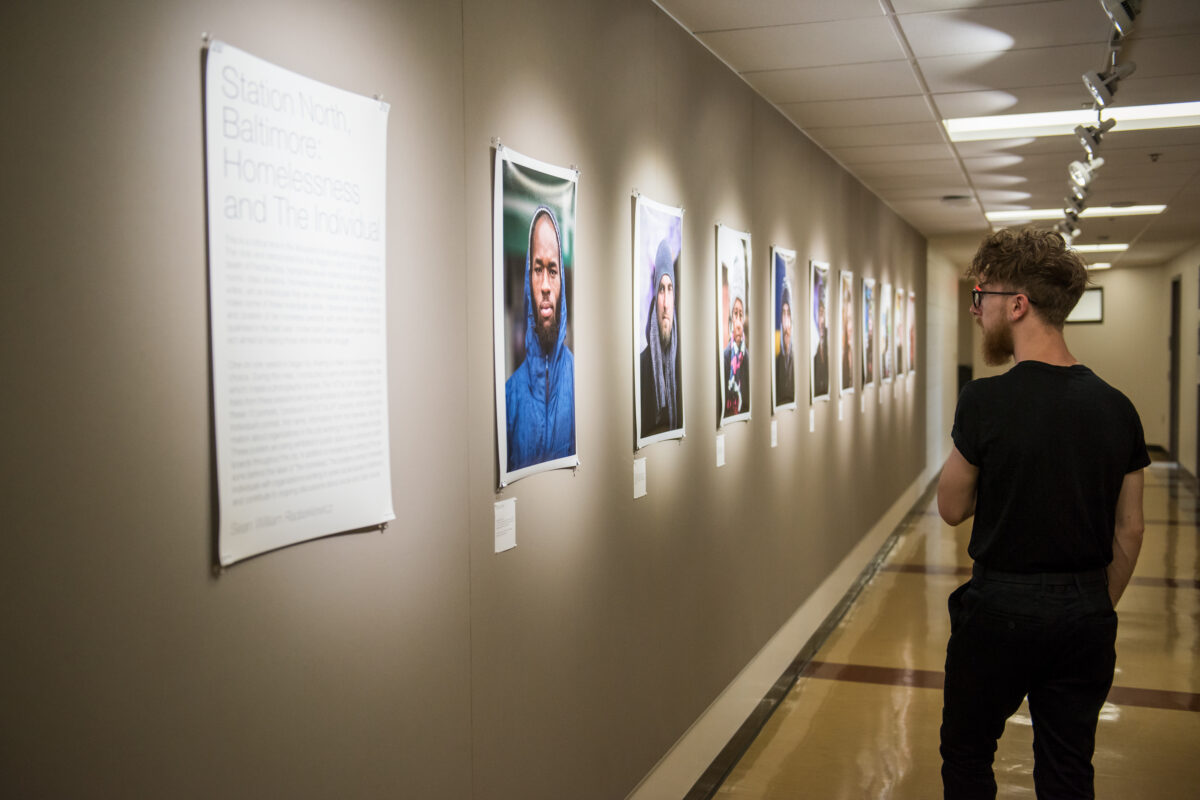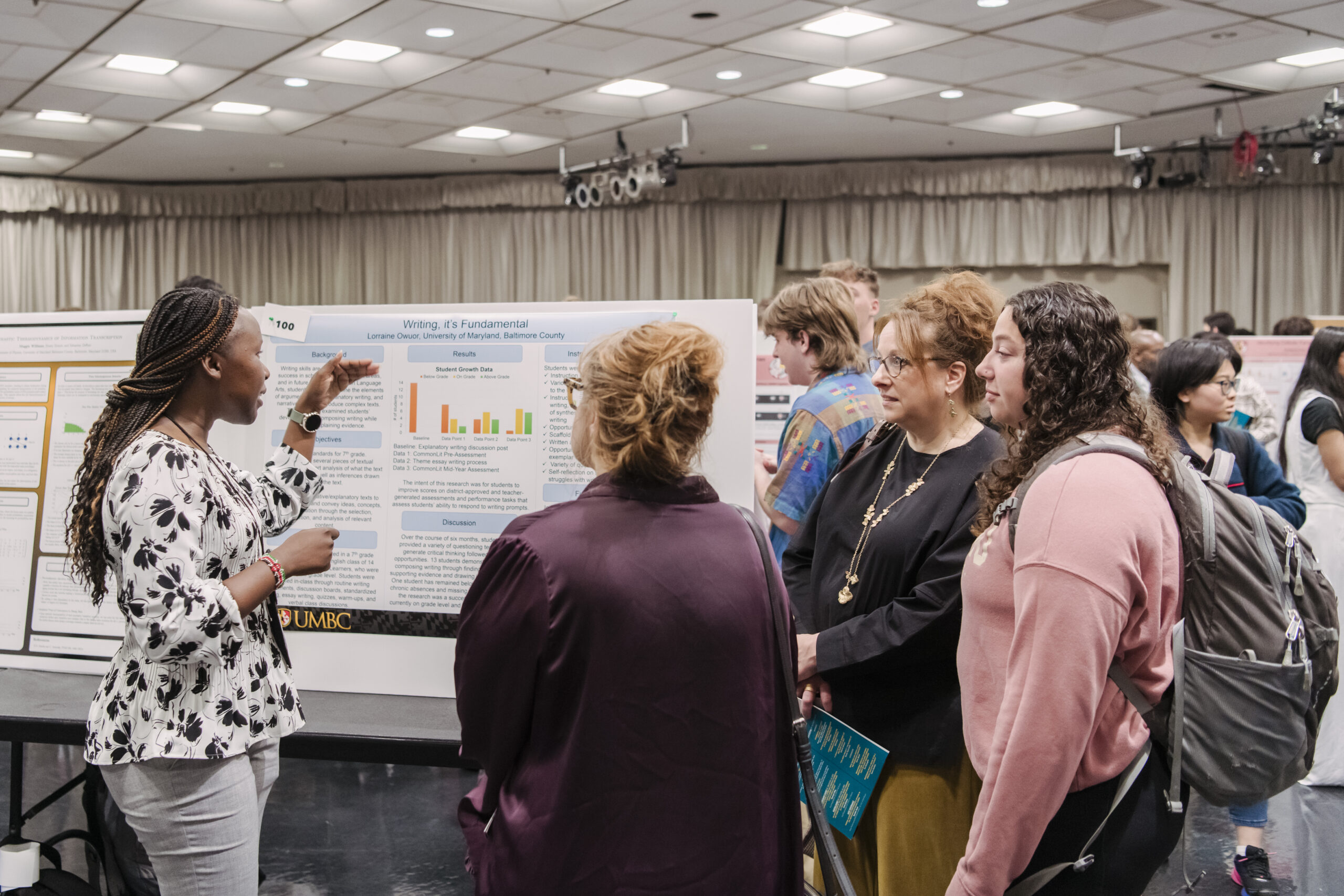UMBC’s Undergraduate Research and Creative Achievement Day (URCAD) is returning for its 29th year on April 16. For nearly three decades, the annual showcase highlights the research, scholarship, and creative work carried out by undergraduate students who are working alongside faculty mentors.
URCAD 2025 returns to the University Center for research on assessing campus vegetation using tethered weather balloons, a student-curated gallery exhibition that explores “the theme of identity,” an analysis of how social media plays a role in Mexican feminist movements, and much more. Throughout the years, URCAD has grown to be a hallmark experience for Retrievers that exemplifies the expansive breadth and collaborative nature of UMBC research. This work is evident by the university’s reconfirmed designation as an R1 institution by the Carnegie Classification of Institutions of Higher Education earlier this year.
As we gear up for the next edition of the highly-anticipated day of undergraduate research, here are five ways URCAD is a uniquely UMBC experience:
1. Retrievers seriously love research
At URCAD, research enthusiasts—including those initially hesitant—have the opportunity to come together and “geek out” about all things research. First-time participants and seasoned presenters alike are able to showcase what they’ve explored and learned in one of UMBC’s many research labs, out in the field, or within specific industries. On average, about 300 student presenters take part in URCAD each year, with last year’s event featuring more than 400 student participants. Even amid a global pandemic, students eagerly participated in the event from their homes, drawing in 8,000 virtual visits in 2020 and 11,000 virtual visitors in 2021.
2. Stage for multidisciplinary collaboration
True to UMBC’s intentional culture of inclusive excellence, URCAD spotlights the collaboration that happens across multiple colleges, disciplines, and departments. At URCAD 2023, a team of students from the College of Natural and Mathematics Sciences and the College of Engineering and Information Technology presented their research on the tradeoffs that exist between privacy and utility when using smart devices at home. This year’s event will include a presentation of a multidisciplinary capstone team that designed and constructed a fixed-wing unmanned aerial vehicle, among many other other cross-collaborative projects.
3. Community-focused research based in Baltimore
Nearly each URCAD iteration features presentations of research conducted throughout Baltimore City and Baltimore County. Past events have included a short film screening that chronicles the history and the decline of LGBTQ+ nightlife in Baltimore City; a presentation on findings from a 2021 UMBC-led study to better understand the experiences of low-income Baltimore families without broadband access; and a 2017 URCAD photography exhibit that captured the experiences of unhoused people living in Baltimore’s Station North area.

4. A return home for alumni researchers
Each year, the research event includes a keynote speech delivered by esteemed UMBC alumni— some of whom were once URCAD presenters themselves—such as the 2024 keynote speaker Stefanie Mavronis ’12, political science, media and communication studies. Mavronis shared her journey of being a student researcher and how her experiences led to her current position as the director of the Mayor’s Office of Safety and Engagement in Baltimore City. Randi Williams ’16, computer engineering, will deliver the URCAD 2025 keynote speech. Williams is the research director of Day of AI, a non-profit organization that provides educators with artificial intelligence literacy curriculums for K-12 students.

5. Pathway for post-graduation success
Many past URCAD presenters have gone on to pursue advanced degrees and postdoctoral fellowships following their time at UMBC. And they say the early exposure to rigorous research opportunities help land those positions. After presenting at URCAD 2023, Ellie Bare ’23, biological sciences, shared that “having opportunities to improve my science communications abilities was invaluable and really great…it even helped me with my post-baccalaureate interviews.”
Before his current role as a research assistant with the Federal Reserve Board of Governors in Washington, D.C., Peter Wilschke ’24, economics and political science, presented research he worked on as an intern at The Hilltop Institute at UMBC during last year’s URCAD event. Beyond academia, URCAD participants have found industry success. Members of UMBC’s Game Developers Club, some of whom were past URCAD presenters, have gone on to find positions at Facebook, the Unity game engine platform, and Firaxis games, to name a few.
More information on URCAD 2025 presenters and additional sneak peeks of upcoming presentations can be found here.
Tags: Baltimore City, CAHSS, CNMS, COEIT, undergrad, undergradresearch, URCAD

